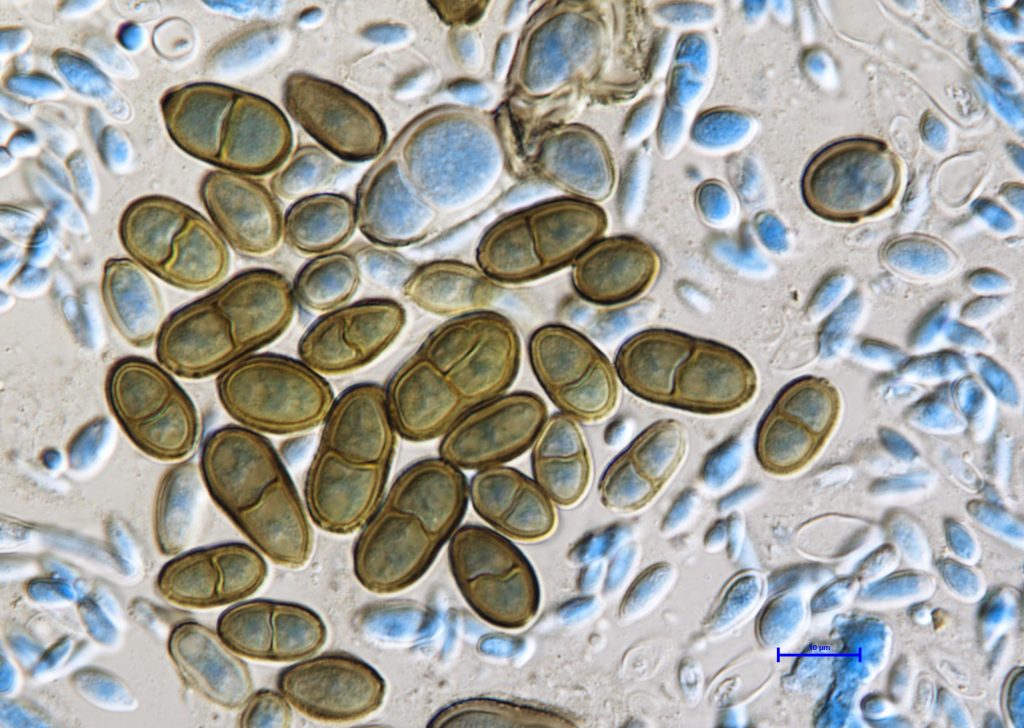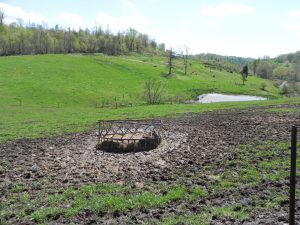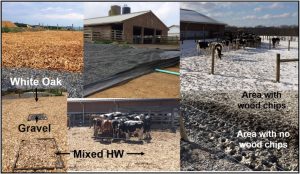
July 26, 2024


Farmers are concerned about animal health and water quality and are often contending with wet, muddy livestock pastures that can cause disease and pollution. Such conditions are most problematic during colder months when farmers turn to winter confinement areas for feeding and sheltering their animals. These conventional confinement systems can be detrimental to livestock comfort and health as well as harmful to the environment.

An effective solution to mitigate the negative effects of livestock winter confinement is the installation of a livestock woodchip pad heavy-use area (HUA). Woodchip pad HUAs are livestock confinement areas with a drainage system overlain by a woodchip surface area. Typically, these installations feature a shallow excavated area filled with coarse stone aggregate and a network of perforated drainage pipes topped with 20–50 centimeters of woodchips for percolate collection.

This type of HUA system has been labeled a “woodchip corral”, “out-wintering pad”, “stand-off pad” or “woodchip heavy-use area” and has been successful in New Zealand, Ireland, the United Kingdom and, recently, the United States, to keep livestock healthy and dry and properly contain toxic waste and polluted runoff. Compared to other winter confinement systems, woodchip pad HUAs improve livestock food intake and weight gain.
Dr. David DeVallance, InnoRenew CoE’s research group leader for Renewable Materials Composites, has partnered with Dr. Joshua Faulkner at the University of Vermont Extension Center for Sustainable Agriculture in Burlington, Vermont (USA) to expand research in this area and bring enhanced woodchip pad HUA technology to Slovenian farmers.
“Manure waste entering water systems affects all human beings through water pollution,” Dr. DeVallance says. “To alleviate this burden on humans and animals, our more recent research focuses on the potential for innovative, thermochemically modified wood chip systems as part of an engineered biomass surface for livestock heavy-use areas.”
“Partnering with Dr. Faulkner and learning from his experience as an agricultural engineer implementing HUAs on working farms will greatly facilitate the development of woodchips with enhanced properties to improve HUA performance,” he adds.
Materials used within the system are key to productive woodchip pad HUAs. Woody biomass (i.e., woodchips) and biochar are renewable materials that are used in drainage and soil amendment applications. Both woodchips and biochar perform distinct functions in terms of soil quality, pollutant reduction and drainage. To date, only woodchips have been used in these types of HUAs.
Dr. DeVallance and Dr. Faulkner previously investigated novel HUA concepts with hardwood chips, biochar and thermally modified wood in laboratory studies and short-term field demonstration sites within the United States (Christianson et al., 2017; Faulkner et al., 2015). At their West Virginia University, West Virginia (USA), demonstration site (Figure 1), they found that HUAs’ water flow is abated when using woodchips instead of gravel. Furthermore, their demonstration site studies found that phosphorous (P) and total nitrogen (TN) in HUAs’ wastewater is also reduced.

Since their original collaboration, Dr. Faulkner has helped to install and evaluate four new woodchip pad HUAs in Vermont (USA). These projects have refined the use of woodchips for HUAs and provided a longer-term study of woodchip utility and performance.
“We are interested in developing new solutions that utilize biomass and composite systems to improve the environment,” Dr. DeVallance notes. “Specifically, we are intent on developing sustainable and affordable approaches from renewable materials to effectively control manure nutrients during the winter-feeding period, while ensuring a healthy and comfortable animal environment.”
Woodchip pad HUA technology research at InnoRenew CoE is under the auspices of Dr. DeVallance through “Wood chip technology for livestock heavy use areas to improve water quality”, an international bilateral scientific cooperation project between the Republic of Slovenia and the United States of America (BI-US/19-21-114) financed by the Slovenian Research Agency (ARRS). For further details about the benefits of woodchip pad HUAs, please visit the following links:
Woodchip Pads for Livestock (PDF, University of Vermont Extension)
Vermont’s First Wood Chip Pad (YouTube, University of Vermont Extension)
Wood Chip Barnyard – Complete Barnyard Overview (YouTube, Bradford County Conservation District)